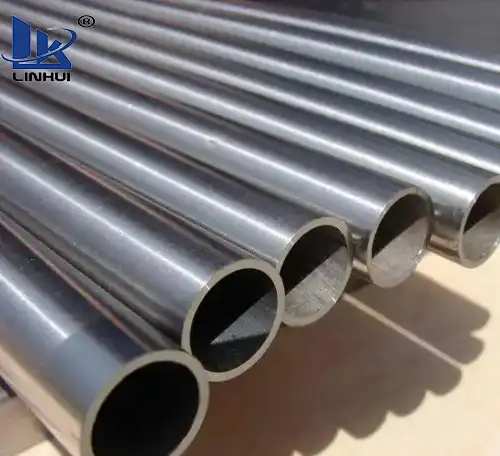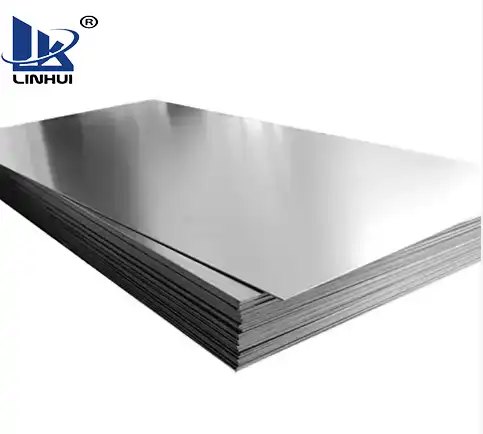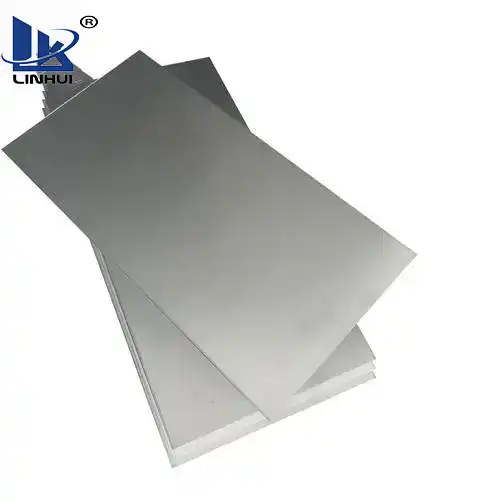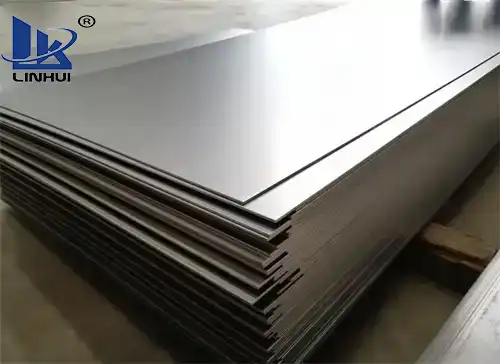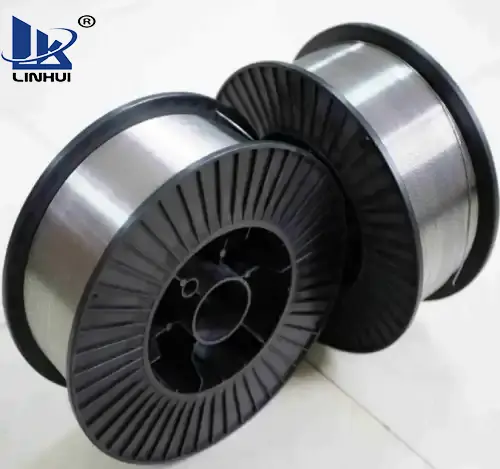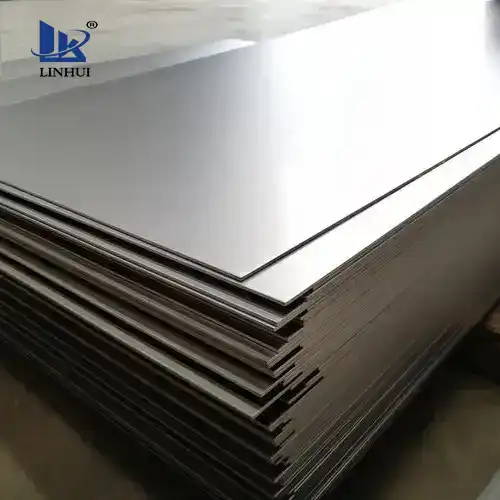The projection area of a large overall titanium alloy frame can reach 4~5m2, and it is usually a reinforced frame with reinforcement on both sides, the shape is in accordance with the skin direction of the variable bevel angle, and there are dozens of groove cavity structure on each side, the web is thin and has complex reinforcement. Both sides of the frame usually have a lug structure connected to the wing. The middle of the frame usually has two large circular openings with beveled edges to match the shape of the engine. This type of frame also has the general characteristics of lightweight, thin wall, deep groove, variable bevel profile, and high precision for aircraft structural parts. In short, this kind of frame is not only difficult to cut materials, and welding seams, welding deformation and welding shrinkage complex, large size, complex structure, high precision requirements, and removal rate of more than 90%, these characteristics determine this kind of frame must be processed with large five-coordinate CNC machine tools, CNC machining is very difficult and strong.
Segmentation before welding CNC machining process. The purpose of pre-welding segment processing is mainly to ensure the needs of the welding process, processing the welding surface, welding benchmark, and for welding deformation to leave a sufficient margin. Pre-welding segment processing process directly affects the welding process, affecting the deformation of the whole frame after welding and processing allowance, pre-welding CNC machining process needs to pay attention to the following aspects:
(1) all weld seams are designed to be straight, and each end of the weld seam is extended outward some so that the head end of the weld seam and the end of the lead arc position outside the part.
(2) before welding the processing shape, the groove bottom and sides are left with enough margin, used to offset the warpage deformation of the whole frame after welding.
(3) before welding the weld face leave a suitable margin to offset the shrinkage of the weld.
(4) The verticality and surface roughness of the weld surface should be high to ensure that the butt joint gap is small enough when welding.
(5) In order to improve the efficiency of cutting processing, this stage is dominated by large-size tools, using machine-clamped indexable tools with a coating to achieve efficient cutting with a large depth of cut, wide cutting, and fast feed. It has been proved that the above pre-welding processing scheme design is successful in general and can meet the welding and processing requirements of the whole frame.
CNC machining process of the whole frame after welding
The cutting bottleneck of titanium alloy is the low processing efficiency, only 20%~40% of 45 steel. The CNC machining process of the whole frame mainly considers cutting efficiency, dimensional accuracy control, flatness control, and surface shape control of the part. After welding the whole frame process protocol design needs to take the following process measures:
(1) welded whole frame CNC machining before the part after welding deformation to measure, according to the measurement data to determine the origin of the processing coordinate system.
(2) Due to the welding deformation and misalignment between the frame sections, so to arrange the positioning reference hole and reference surface repair processing.
(3) Milling off the weld lead block before processing to ensure the uniform distribution of the shape machining allowance.
(4) This kind of processing is heavy cutting, must choose the spindle, high torque, and sufficient power of the machine tool.
(5) The side and bottom of the slot cavity should be processed separately.
(6) First process the top surface of the tendon, first three axes after five axes, first face after the hole, so as to reduce the chipping edge, let the knife, reduce the hole processing difficulty.
(7) Large whole frame should be combined with the process to reduce the turning surface.
(8) The shape finishing is done with welded long-edge end mills, with small cutting width and large cutting depth, once finished, with small surface roughness.
(9) The number of platens should be enough to ensure the rigidity of the clamping system and process system.
(10) Select coatings that can improve the tool surface hardness, high-temperature resistance, anti-wear, high strength, reduce the coefficient of friction, and improve temperature and chemical stability. Tool wear and breakage should be strictly monitored during machining, and worn tools should be replaced in a timely manner.
(11) Adequate and continuous supply of cutting fluid should be maintained.
(12) When roughing the side, with hard oxide skin, reverse milling should be used, and the rest of the place is better to use the smooth milling method.
(13) Strictly implement the cutting parameters of each procedure specified in the process protocol, and do not blindly pursue processing efficiency and increase the cutting speed to ensure that the surface of the part is not burned.
Repair of titanium alloy frame defects
1. Local repair of micro defects
The repair of tiny defects ( such as sparse) on titanium joints is very easy. The affected area is cleaned by drilling or grinding and then filled. Care must be taken to ensure that the weld filler metal has completely filled the repair area.
2. Repair of linear shows
If the X-ray negative shows that the sparring is linear, surface remelting can be used. The energy used in the surface remelting should be greater than that used in the previous welding to ensure that the latent spar is melted through. If the method does not work, or the defect itself is very serious, the entire weld area will have to be cleaned up and then rewelded. The repair of this defect is laborious and will increase the cost, in the operation must pay attention to quality assurance.
3. deformation
Due to the large local heat transfer during welding, and poor thermal conductivity of titanium alloys, resulting in non-linear stresses around the weld. At the beginning the molten pool is formed as the metal is heated, thus creating a stress concentration around the pool. However, since the base metal is large and the melt pool and heat-affected zone are small relatives to each other, stresses accumulate around the joint and heat-affected zone. If the force due to thermal expansion exceeds the compressive stress of the base metal, the local plastic deformation leads to permanent deformation of the structure. The type and degree of deformation are influenced by the nature of the material, the degree of restraint, the design of the joint, the method of adding material, and the welding process.
4. The nature of the substrate material
The main properties of the substrate material that affect deformation are the coefficient of thermal expansion (the larger the coefficient, the easier the deformation), the heat capacity per unit volume (the smaller the heat capacity, the easier the deformation), and so on. Since the deformation is the result of the interaction of tensile stress and material compression force, the coefficient of thermal expansion has a crucial influence on the degree of deformation. Simple calculations and practical manipulation found that the degree of deformation of titanium alloy is located between steel and stainless steel (i.e., the degree of deformation is slightly higher than steel and slightly lower than austenitic stainless steel).
5. Suppression of clamping
If the part is not clamped during welding, its deformation will lead to the release of stress. Therefore, a variety of clamping methods used to prevent movement and deformation in the welding is used. It should be noted, however, that the tighter the clamping, the greater the stresses in the material. So in order to reduce deformation, the first thing to do is to use rigid fixtures and cooling on the fixture, thus limiting deformation; the welding process to take symmetrical welding manipulation and fair welding sequence, because the use of rigid fixtures certainly makes the deformation is suppressed, but the fixture to the off will also produce new deformation; welding fixture pressure must be uniform, otherwise it will also produce deformation.






